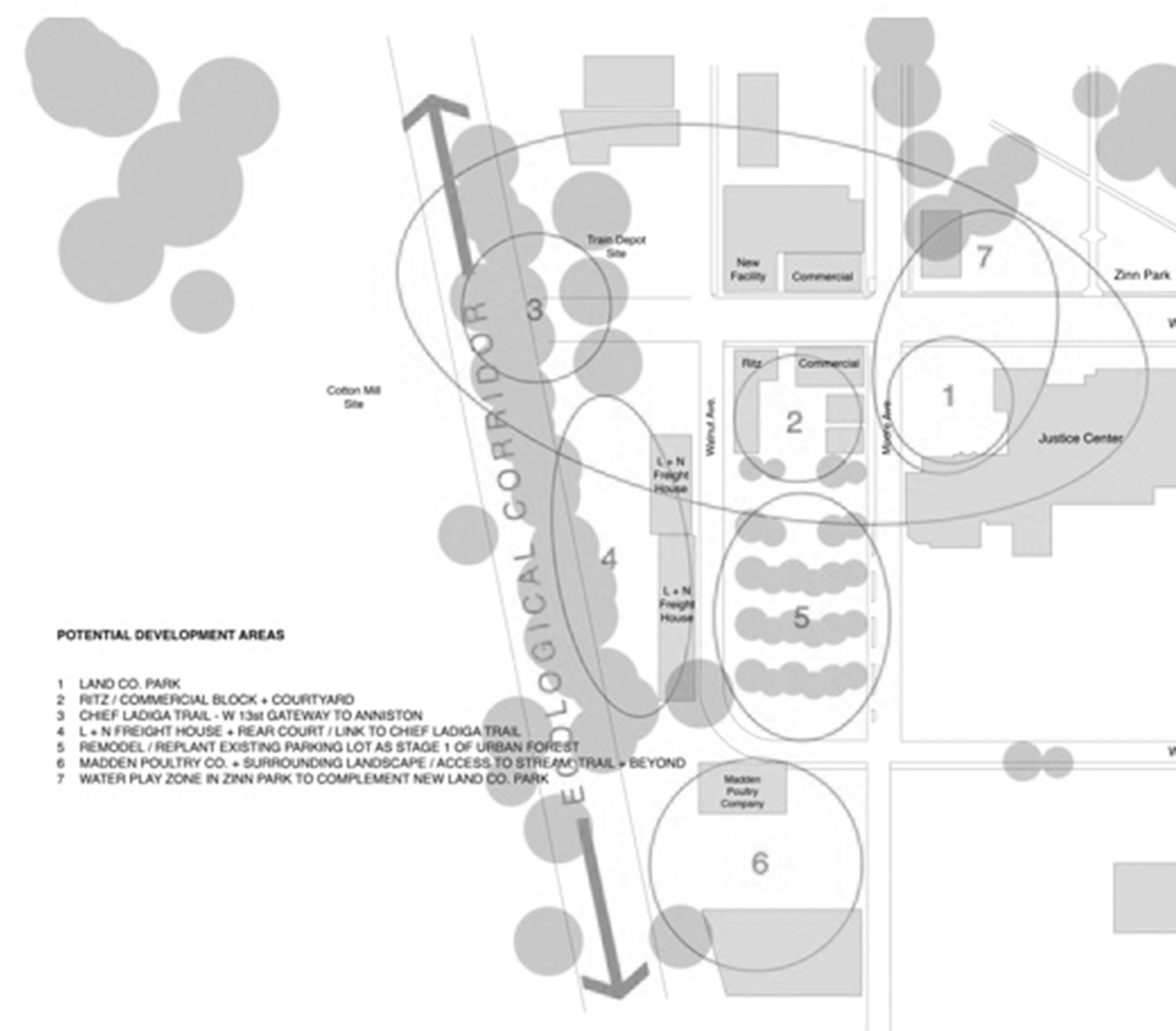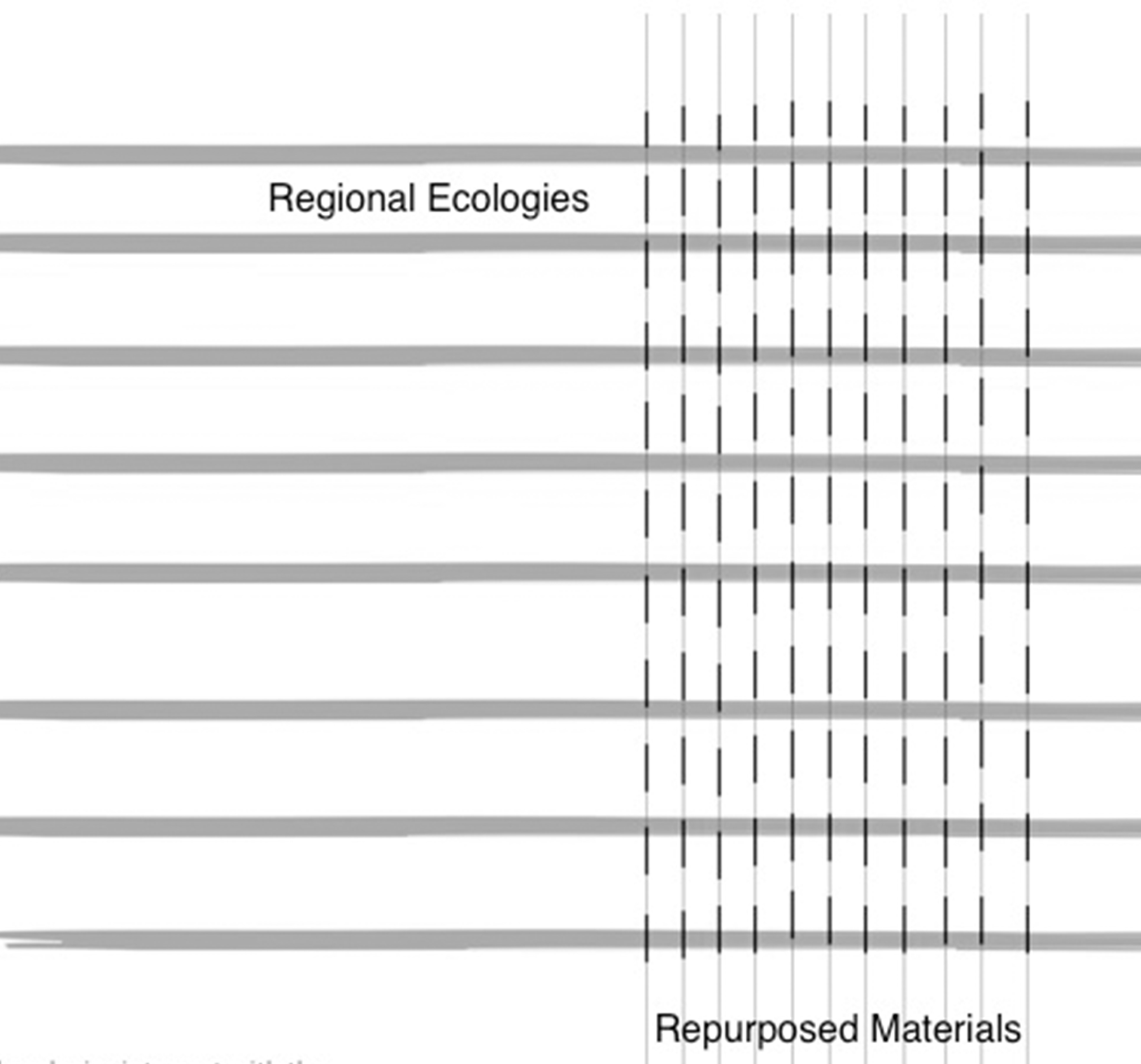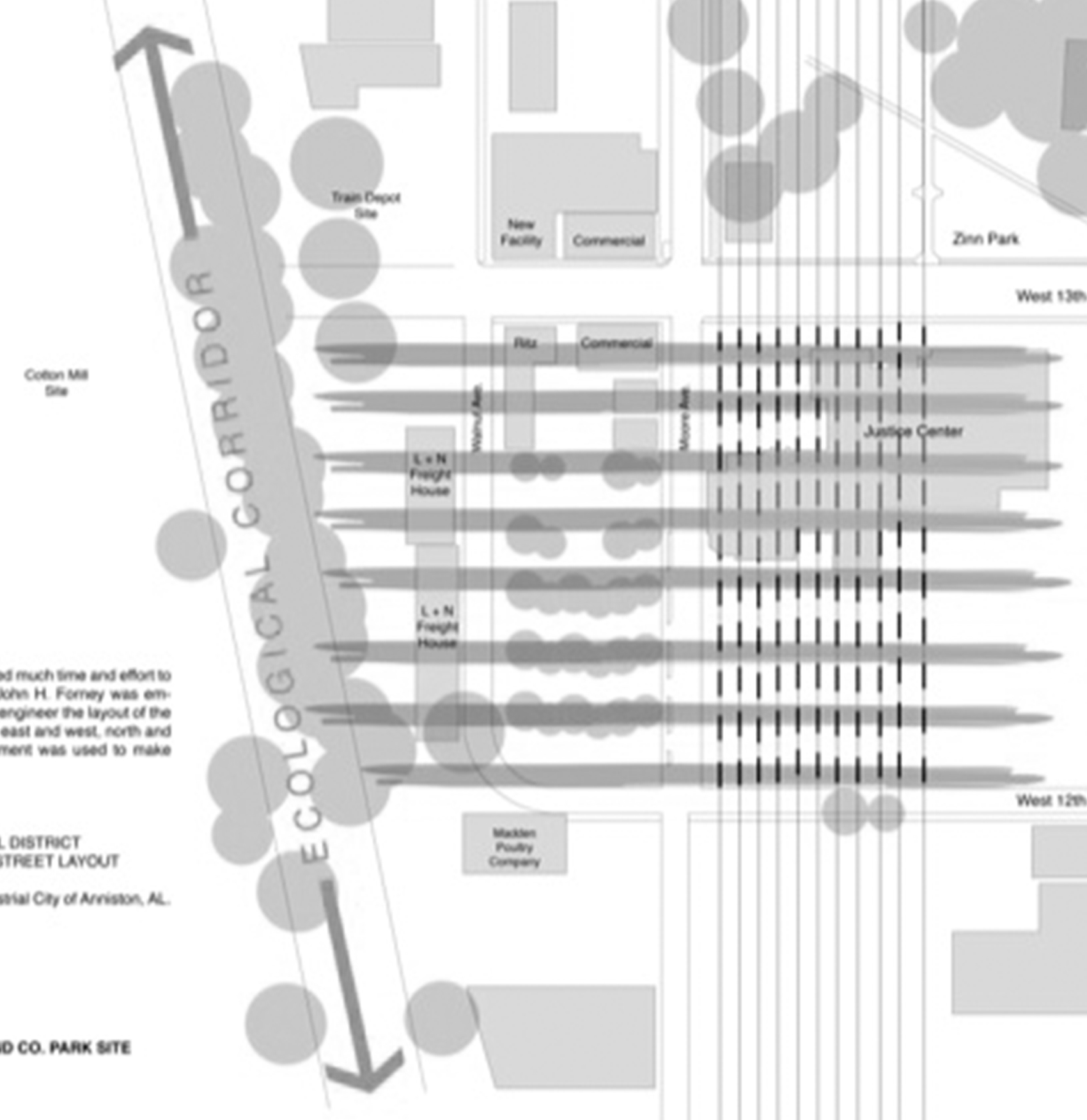ANNISTON LAND COMPANY PARK
Mapping the ecosystems of the Upper Coosa River system and the historical events of the City of Anniston generated a diagram for the design of a park that commemorates the city's complex trajectory through the twentieth century. Anniston was the site of major Civil Rights protests and a protracted struggle for freedom which led to the death of many locals, including children. It was also the location of a large Monsanto chemical plant that polluted streams and groundwater, bringing disease and death to African-Americans living downstream of the factory site. For many years after the Korean War, Anniston hosted the Anniston Army Depot, a major chemical weapons storage facility. An incinerator was constructed to destroy US stockpiles of Sarin and XV nerve agent, the removal of these chemicals finally completed in 2011.
Located between the Coosa River and the Talledega National Forest, the city has an abundance of natural systems at its doorstep. These provide clean water, recreational opportunities, a rail to trail system, and mountain biking. The area has an extraodinary biodiversity.
The plan for the Anniston Historic District and Land Company Park links the ecological corridor of the Chief Ladiga Trail with the repurposed materials for the demolished Land Company building to create a template for the design of the park.







